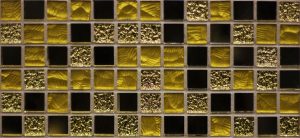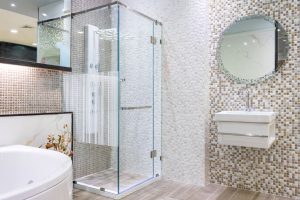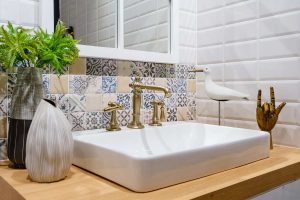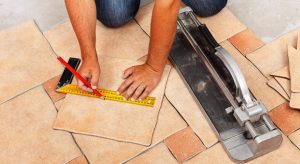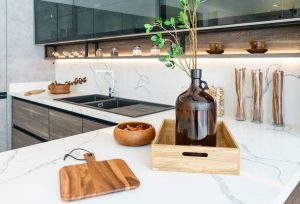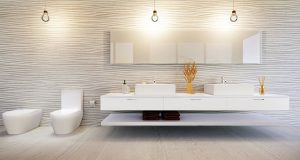Function
Schluter-KERDI is a special bonded waterproof membrane with limited crack-bridging capabilities. It is made of a revolutionary soft-polyethylene that is covered on both sides with a special fleece that is meant to anchor the membrane into the thinset mortar that you use.
Schluter-KERDI was developed as a waterproofing membrane that was meant to be used in conjunction with ceramic and stone tile coverings. The tiles can be directly installed on the Schluter-KERDI using a thin-bed method. Trowel-applied coverings such as plaster can also be used.
Pre-Cut sections of Schluter-KERDI are available for inside and outside corners, as well as for pipe collars. The best Schluter-KERDI-BAND to seal butt joints or corner joints are in widths of 5″ (12.5cm), 7-1/4″ (18.5cm), or 10″ (25cm). Schluter-KERDI-FLEX in 5″ (12.5cm) or 10″ (25cm) widths are meant to be used to seal expansion joints or flexible joints.
Material
Schluter-KERDI is a polyethylene waterproofing membrane that has a very high steam diffusion density. The material itself is physiologically safe and the it requires no special disposal.
Schluter-KERDI is waterproof and resistant to most chemicals commonly encountered in tiled environments. It is resistant to aging and will not rot under any circumstance. Schluter-KERDI is highly resistant to saline solutions, alkaline, acids, many organic solvents, alcohols and oils. For acid-resistant coverings, use an epoxy adhesive to set and grout the tile.
Schluter-KERDI is suitable for floor and wall surfaces where protection against the penetration of water and moisture or other harmful substances is necessary. Surfaces include areas surrounding swimming pools, showers, and tub surrounds. Industrial applications include breweries, dairies and the food industry. In order to get the full effect of Schluter-KERDI it is important to verify that the substrate is clean, even, free of moisture, and load bearing. Surfaces that inhibit proper adhesion must be removed or appropriately treated.

Schluter-KERDI
|
Item No. |
Dimensions |
|
KERDI 200/5m |
3’ 3” x 16’ 5” = 54sf |
|
KERDI 200/10M |
3’ 3” x 33’ = 108sf |
|
KERDI 200/20M |
3’ 3” x 65’ 7” = 215sf |
|
KERDI 200 |
3’ 3” x 98’ 5” = 323sf |
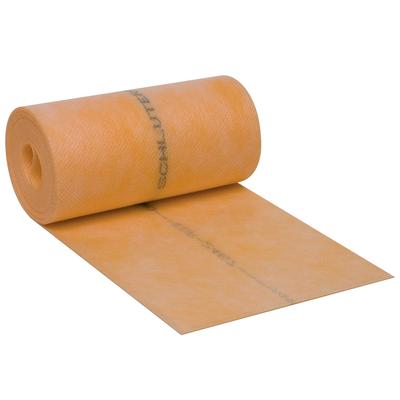
Schluter-KERDI-BAND
|
Item No. |
Thickness |
Width |
Length |
|
KEBA 100/125/5M |
4 mil |
5” – 12.5cm |
16’ 5” – 5m |
|
KEBA 100/185/5M |
4 mil |
7 ¼” – 18.5cm |
16’ 5” – 5m |
|
KEBA 100/250/5M |
4 mil |
10” – 25 cm |
16’ 5” – 5m |
|
KEBA 100/125 |
4 mil |
5” – 12.5 cm |
98’ 5” – 30m |
|
KEBA 100/185 |
4 mil |
7 1/4” – 18.5 cm |
98’ 5” – 30m |
|
KEBA 100/250 |
4 mil |
10” – 25cm |
98’ 5” – 30m |
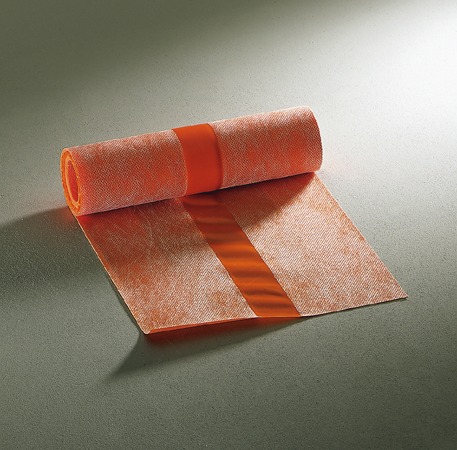
Schluter-KERDI-FLEX
|
Item No. |
Thickness |
Width |
Length |
|
FLEX 125/5M |
12 mil |
5” – 12.5 cm |
16’ 5” -5m |
|
FLEX 250/5M |
12 mil |
10” – 25 cm |
16’ 5” -5m |
|
FLEX 125/30 |
12 mil |
5” – 12.5 cm |
98’ 5” – 30m |
|
FLEX 250/30 |
12 mil |
10” – 25 cm |
98’ 5” – 30m |
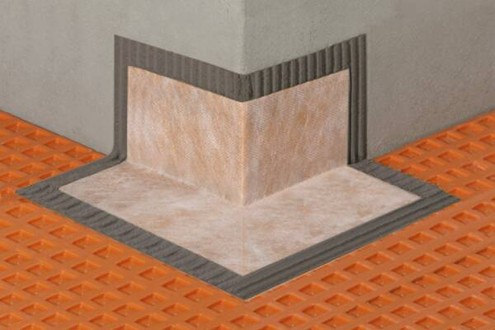
|
Item No. |
Thickness |
Packaging |
|
KERECK / FI 2 |
4 mil |
2 Inside Corners |
|
KERECK / FI 10 |
4 mil |
10 Inside Corners |
|
KERECK / FA 2 |
4 mil |
2 Outside Corners |
|
KERECK / FA 10 |
4 mil |
10 Outside Corners |
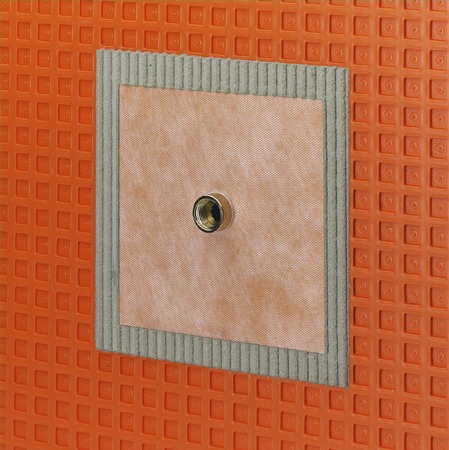
Schluter-KERDI-KM (Pipe Collar)
|
Item No. |
Dimensions |
Thickness |
Packaging |
|
KM 5117 / 22 |
7” x 7” – 17 cm x 17 cm |
4 mil |
5 units |
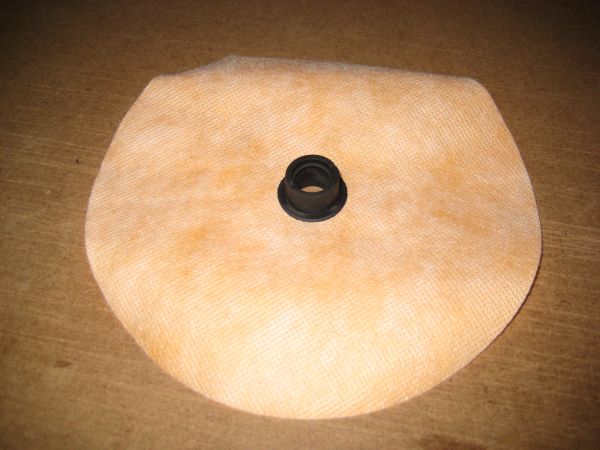
Schluter-KERDI-SEAL-PS
|
Item No. |
Pipe Nipple Opening Diameter |
Thickness |
Packaging |
|
KMS185 / 12 |
½” – 12.5 mm |
4 mil |
1 Unit |
|
KMS185 / 20 |
¾” – 20 mm |
4 mil |
1 Unit |
|
KMS10185 / 12 |
½” – 12.5 mm |
4 mil |
10 units |
|
KMSS10185 / 20 |
¾” – 20 mm |
4 mil |
10 Units |
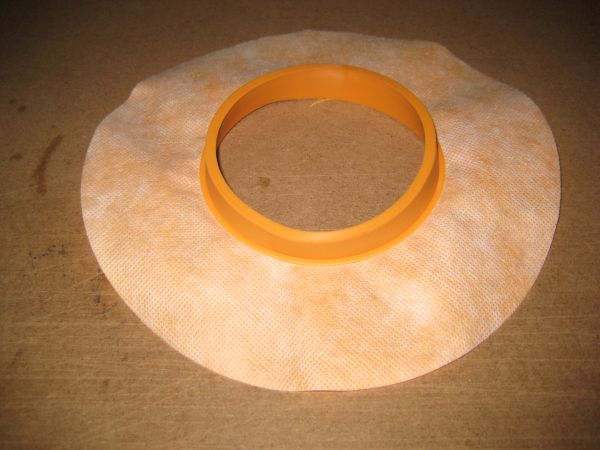
Schluter-KERDI-SEAL-MV
|
Item No. |
Mixing Valve Opening Diameter |
Thickness |
Packaging |
|
KMSMV235 / 114 |
4 ½” – 114 mm |
4 mil |
1 unit |
|
KMSMV10235 / 114 |
4 ½” – 114 mm |
4 mil |
10 units |
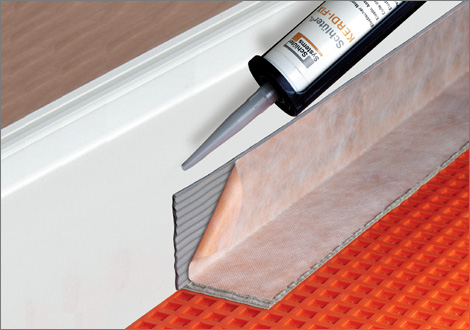
Schluter-KERDI-FIX
|
Item No. |
Cartridge Volume |
|
KERDIFIX (Grey or White) |
9.81 OZ |
Schluter-KERDI-FAQS
1)
Q. Why should I use the Schluter-Shower System?
A. The Schluter-Shower System is an integrated family of products that together form a fully bonded, watertight assembly for tiled showers. Unlike shower pan liners in conventional assemblies, bonded waterproof membranes, such as Schluter-KERDI, bond directly to the mortar bed and protect it from becoming saturated with regular use. In addition, KERDI protects wall cavities from vapor penetration. The Schluter-KERDI-DRAIN provides a simple and secure connection to the KERDI membrane at the top of the assembly. Other components include the Schluter-KERDI-FIX sealant, used to treat protrusions through the membrane, and the Schluter-KERDI-SHOWER-ST/-SC/-SR prefabricated EPS substrates, which can reduce weight and installation time by replacing the mortar bed. The integrated Schluter-Shower System eliminates the potential for leakage, efflorescence, and mold growth in the system, is maintenance-free, and dramatically reduces total installation time to ensure success and make shower installation easier than ever.
2)
Q. Can I use Schluter-KERDI in my steam shower?
A. Yes. Schluter-KERDI has a low water vapor permeance (0.75 perms), allowing it to function both as a waterproofing membrane and vapor retarder in steam showers.
3)
Q. What are the Schluter-KERDI-SHOWER-ST/-SC tray and curb made of? Can they really support the tile assembly?
A. The Schluter-KERDI-SHOWER-ST/-SC tray and curb are made of expanded polystyrene (EPS) foam with a high compressive strength (57 psi). They provide a convenient, lightweight, and stable substrate for the Schluter-KERDI waterproofing membrane and tile. After the tile is installed and grouted, the assembly will support all the loads typical of tiled showers. This can include glass doors or glass block walls.
4)
Q. My shower isn’t the same size as the Schluter-KERDI-SHOWER-ST tray. Can I modify the tray to fit my shower?
A. Yes. The Schluter-KERDI-SHOWER-ST tray can be cut to size to fit various applications. Ideally, the tray should be cut by equal amounts on all four sides to ensure a consistent height of the first course of wall tile. However, slight differences can typically be made up with thin-set mortar when setting the floor tile. The shower base can also be extended past the perimeter of the shower tray using dry pack mortar.Note: The Schluter-KERDI-SHOWER-SC curb can be cut to size to fit various applications. In addition, multiple curbs (or cut sections of curb) can be placed consecutively to form longer runs, including angled designs.
5)
Q. Can I install Schluter-KERDI over drywall in my tiled shower?
A. Yes. Once you install Schluter-KERDI over the drywall panels, they will be completely protected from the water and vapor in your tiled shower.
6)
Q. I’m installing Schluter-KERDI over drywall in my shower. Do I need to tape the joints between panels before installing the KERDI?
A. No. It is not necessary to tape the joints between drywall panels before installing Schluter-KERDI. If you must tape the joints per fire code requirements, make sure to apply a latex primer over the taped joints before installing KERDI. Joint compound can be water soluble and should be protected from the moisture in the thin-set mortar used to install KERDI.
7)
Q. What size trowel should I use to install Schluter-KERDI?
A. A 1/4″ x 3/16″ V-notched trowel is recommended. Mix your thin-set mortar to a fairly fluid consistency (but still able to hold a notch) and solidly embed the Schluter-KERDI into the fresh mortar with the flat side of the trowel (a drywall knife is handy for this purpose as well). It is good practice to periodically lift a corner of the KERDI after embedding it in the thin-set mortar to check the fleece for full coverage.
8.)
Q. What type of thin-set mortar should I use when installing Schluter-KERDI?
A. The thin-set mortar used for bonding Schluter-KERDI must be appropriate for the substrate and must penetrate and engage the KERDI fleece. For most substrates (e.g., drywall, cement backerboard, dry pack mortar, and the Schluter-KERDI-SHOWER-ST/-SC/-SR EPS foam substrates), an unmodified thin-set mortar meeting the requirements of ANSI A118.1 is recommended. When installing KERDI with unmodified thin-set mortar over particularly dry and porous substrates, it is recommended to wet the substrate first, in order to help prevent premature drying or skinning of the thin-set mortar. Unmodified thin-set mortar must be used to construct all KERDI seams to ensure watertight performance of the system.
9)
Q. What type of thin-set mortar should I use when installing ceramic and stone tile over Schluter-KERDI?
A. Unmodified thin-set mortar is recommended to set ceramic and stone tile over the KERDI membrane.Portland cement-based unmodified thin-set mortars are dependent on the presence of moisture for hydration in order to gain strength. Since Schluter-KERDI is impervious, it does not deprive the mortar of its moisture. This allows the cement to properly hydrate, resulting in a strong, dense bond coat. In fact, after the mortar has reached final set (usually within 24 hours), unmodified thin-set mortars achieve higher strengths when cured in continually moist conditions.Exceptions: Certain moisture-sensitive stones, e.g., green marble, or resin-backed tiles may not be appropriate for use in wet areas or may require special setting materials. Please consult the stone supplier and Schluter-Systems for more information. For an acid-resistant covering, use an epoxy adhesive to set and grout the tile. However, do not use epoxy to install the Schluter-KERDI membrane.Modified thin-set mortar is not recommended to set ceramic and stone tile over the KERDI membrane.Modified thin-set mortars must air dry for the polymers to coalesce and form a hard film in order to gain strength. When sandwiched between two impervious materials such as Schluter-KERDI and ceramic tile, including porcelain tile, drying takes place very slowly through the open joints in the tile covering. [According to the Tile Council of North America’s Handbook for Ceramic Tile Installation, this drying period can fluctuate from 14 days to over 60 days, depending on the geographic location, the climatic conditions, and whether the installation is interior or exterior]. Therefore, extended cure times would be required before grouting if using modified thin-set mortars between KERDI and ceramic tile, including porcelain tile. If extended cure times were not observed, the results could be unpredictable. This is even more important to consider in wet areas such as showers as there is the additional concern of latex leaching.
10)
Q. How do I know if the thin-set mortar is modified or unmodified?
A. In general, unmodified thin-set mortar is a blend of Portland cement, sand, and water retention agents that is mixed with water by the user. The appropriate product standard for unmodified thin-set mortars is ANSI A118.1. Look for this standard on the packaging (e.g., product meets ANSI A118.1 when mixed with water). Unmodified thin-set mortar may also be referred to as dry-set mortar by the manufacturer.Modified thin-set mortars are similar to unmodified thin-set mortars, but include additional polymers such as latex. The additional polymers are introduced in either liquid or powder form. In the first case, the user mixes an unmodified or dry-set mortar powder with a liquid polymer additive instead of water. In the second case, the polymers are added by the manufacturer to the dry blend in powder form. The user then mixes the powder with water. The appropriate product standards for modified thin-set mortars include ANSI A118.4 and ANSI A118.11.
11)
Q. Can I use a premixed thin-set mortar to install Schluter-KERDI and tile in my shower?
A. No. Schluter-Systems does not recommend the use of premixed thin-set mortars (mastics/adhesives) in any Schluter-KERDI installation.
12)
Q. I accidentally poked a hole through the Schluter-KERDI while installing the membrane. Do I need to start over or can I simply repair the hole?
A. Holes can typically be repaired by installing a “patch” of Schluter-KERDI or Schluter-KERDI-BAND with unmodified thin-set mortar, making sure to provide a 2″ overlap in all directions. Small penetrations may also be repaired using the Schluter-KERDI-FIX sealant.
13)
Q. Can I install glass tile over Schluter-KERDI?
A. Glass tiles are unique products and may require special consideration. Please call Schluter-Systems at (800) 472-4588 to discuss your particular application before installing glass tile over Schluter-KERDI.
14)
Q. What is a water test? How do I perform one on the Schluter-Shower System?
A. A water test is a quality control check performed on any shower installation before setting tile. It basically consists of stopping the waste line with a test plug and filling the base of the shower stall with water to check for leaks. You can quickly check the test plug by filling the pipe and drain with water up to the height of the Schluter-KERDI-DRAIN integrated bonding flange (or a little below). If the plug is watertight, then you can continue filling the assembly. The water level is marked and the assembly is left for a specified amount of time (24 hours is typical). If there are no leaks, the shower passes.
Notes:
We recommend waiting a minimum of 24 hours after setting Schluter-KERDI to begin water testing. This will allow the thin-set mortar to reach final set and ensure watertight performance at the seams under normal curing conditions (i.e., room temperature). If temperatures are much lower (e.g., around 50 or 60 degrees), then it is best to wait longer.
If you are building a barrier-free shower, then you will need to provide a temporary dam (e.g., a 2×4 and silicone sealant) at the threshold.

